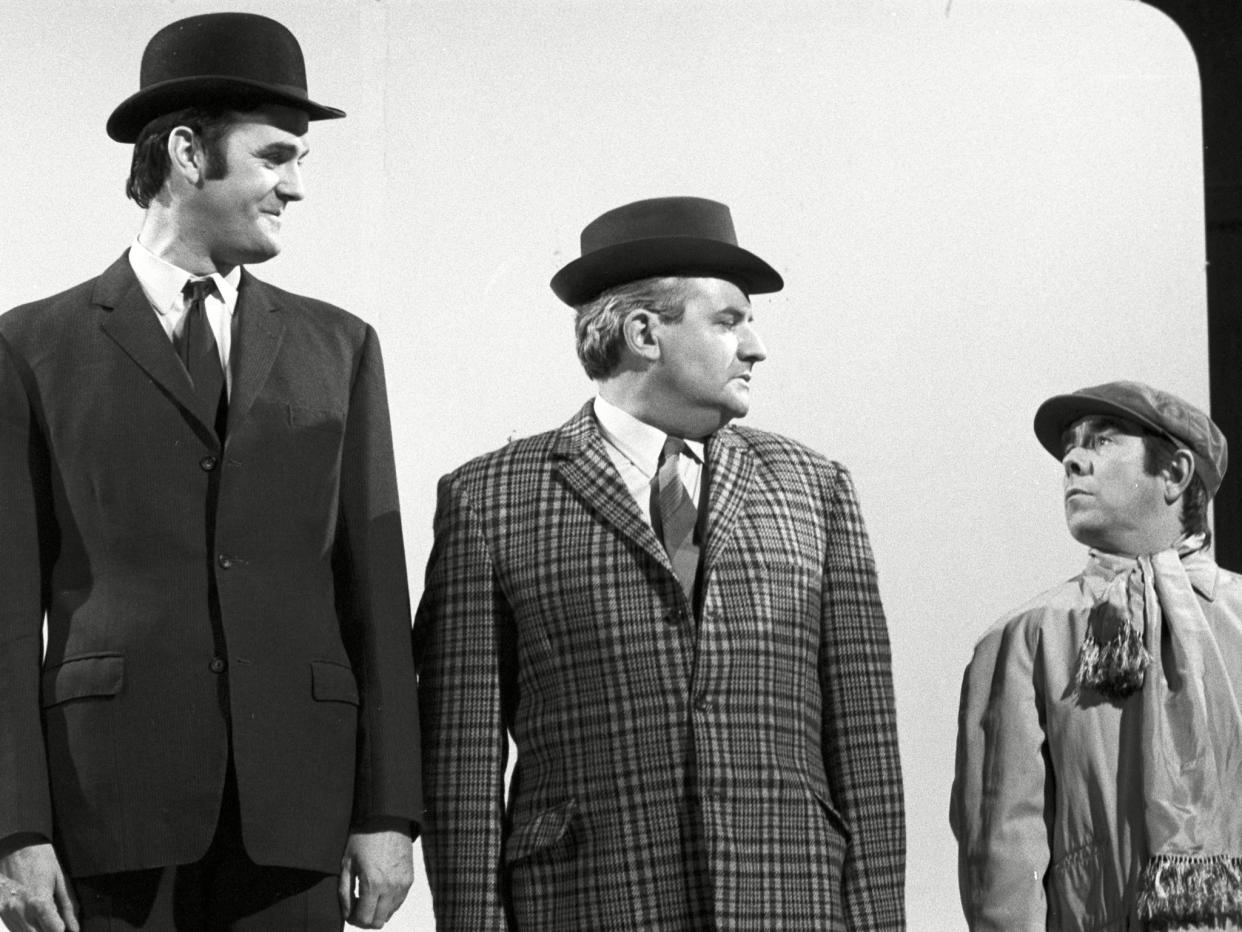It's 50 years since Gordon Rose's seminal study of the 'working class' so how have things changed?

This year, the “working class” is half a century old. Well, not quite. But Gordon Rose’s pivotal exploration of the working class is 50 years old. In the late 1960s, Longman – the esteemed educational publisher that was founded in 1724 – commissioned “Introductions to…” various subjects: Population, Adolescence, the Family, Crime, the Mass Media and the Welfare State, in addition to Rose’s study.
There was certainly no shortage of ambition.
General editors for the series were the brilliant scholar of adolescence, Professor John Barron Mays of Liverpool University and Maurice Craft of the University of Exeter. The purpose of Rose’s contribution was to be: “Primarily a descriptive study [of the working class] – but one which also offers an analysis of long-term trends.”
And why Gordon Rose? This gifted academic started as an office boy, then spent five years in the army before going to Oxford to train as a social worker. After that, for a further two years, Rose researched everyday life in the city of Hull, before joining the teaching staff of Manchester University.
At this juncture, Gordon and his wife Barbara – an eminent sociologist in the same faculty – could purchase a sprawling Rectory near Jodrell Bank at a time, amazingly, when such properties on the outskirts of Greater Manchester were not fancied. From 1958 to 1960, Rose was seconded to the Ministry of Health before taking on a readership in social administration back at Manchester Uni, as well as directorship of the Central Lancashire Family and Community Project.
Nowadays it might be thought almost impossible to sum up the working class – or any other key “demographic” – in 150 pages; and anybody embarking on such a venture would be overwhelmed by his or her sources. They would, indeed, have to begin from a starting point of asking: “Does the working class actually exist?”
Intriguingly, Gordon Rose begins, instead of ending, with the giants into whose shoes he is stepping: the studies of Ashton (Coal is our Life), Banbury (Tradition and Change), Bethnal Green (Family and Kinship in East London), Nottingham (Four Years Old in an Urban Community), Liverpool (The People of Ship Street) and Radby (The Social Background of Delinquency) among so many other social topographies.
It is no accident that the names of certain social explorers, such as Toby’s father, Michael Young, Peter Willmott, Richard Hoggart, Jeremy Seabrook, John Braine and Walter Greenwood have become part of the English language; never forgetting Charles and William Booth before them.
Rose helpfully starts his own analysis with stratification. As in geology, without strata people could not be classified or pigeon-holed. For there to be a “working class” there must be layers of society above and below, from elites to down-and-outs, not overlooking fine distinctions within the working class: extractive, manufacturing, supervisory, “lower”, “aspiring”, whatever.
Do we, he asked, become working class through an imbalance of power; through the helplessness, hopelessness, resulting from such power conflicts; by our upbringing, inculcation, self-evaluation, income – or are we thus labelled by others?
Inevitably, so much depends on jobs; and notably on concepts of occupational prestige. Occasionally widely different jobs find each other, rely on each other, yet expose distinctions: classically we might think of secretary/managing director, air steward/pilot, nurse/doctor. The mutual recognition prompts thoughts of social mobility – but does that elusive phenomenon actually only happen after college, reskilling, determined disassociation from the status quo – maybe even “getting on your bike”?
Rose pictures the worker within his or her workplace. Is the job waged or salaried; dreary or interesting; repetitive or creative; solitary or communal? If this class is to be called “working”, then other classes either have to be “leisured” – or at least have access to somewhat more leisure than is available to the drudge and the skivvy. So much too comes down to how work and worker are organised: benevolently, tyrannically, cooperatively, coercively. Rose places much emphasis on norms, customs, conventions – and trade unions. It is notable that 1968 is sufficiently far in the past that the book required a special section on “Women at Work”.
Gordon Rose is in his element discussing income – or lack of it: poverty, indebtedness, subsistence. Depressingly, 50 more years do not appear to have seen Britain progress far beyond the Poor Law Amendment Act of 1834. Money matters.
Allied to income, and dependent upon it, a chapter is devoted to the themes of education, health and housing. Again, and despite secondary moderns giving way to comprehensives, rickets giving way to keep fit, vast municipal estates giving way to mixed-living, Rose concludes the middle class will always benefit disproportionately from state provision. Absurdly, and indisputably, since 1968, there has been much backsliding in how and where governments award, or deny, shelter and medical care to the mendicant working class.

Another chapter intriguingly teases out the personality traits that were perceived to define who is working class and who is not: matriarchy, endurance, stubbornness, missed or mixed communication, fortitude, promiscuity are signifiers. Rose rejects both generalising and stigmatising; nonetheless, he is writing in the context of the “us-and-them” debate. Just over two decades after the end of the Second World War, factors such as being thought of as “low-status”; living in a one-industry village; needing to leaven everyday struggle with an occasional splurge; coming from “the North” – all perpetuate distinctiveness.
Rose then moves on to life cycle: longitudinal if not resulting in longevity. He argues that wherever you place the pointer – courtship, child rearing, parenthood – three factors act as a brake: limited vocabulary, the tension that is dominance against submission, and practical constraints, such as overcrowding.
Viewing Rose’s study from the giddy heights of 2018, there is certainly room for a degree of optimism. Youth culture, multifaceted as it is, now embraces many working class teenagers when they might once have been in work or getting ready for a life of grind in discrete communities. There has also been an increase in pensioner prosperity – at least, there are fewer working class pensioners in abject poverty – at the end of gainful employment.

That optimism crosses over into working class leisure. Where Rose’s research was into the wireless, black and white television, dog-racing, bingo, the Working Man’s Club, Townswomen’s Guild, parks – and cherished trips out in a second-hand motorcar – a modern surveyor of working class leisure might place more emphasis on gigs, streaming, tablets and going to a shopping mall for a meal.
It is significant that organised religion has as little appeal for Rose’s working class as it did two decades earlier or as it does 50 years on.
Nor has political allegiance changed much over the decades. We still have deferential working class Tories and middle class Labourites. What perplexes millennial psephologists is declining loyalty to the same party (whichever it may be) over successive elections – although brand loyalty in footwear and fashion easily holds its own.
A further point of note: any book concentrating on 2018’s working class – if indeed it would be so dubbed – would have to embrace the experience of BAME individuals and LGBT+ people. Rose didn’t go there.
***
At the conclusion of his seminal examination Gordon Rose made a set of predictions for the future of the working class. He accurately foresaw rather more diversity – in all its manifestations – as the class evolved towards the end of the 20th century. He predicted too that a sense of self-respect would become better developed. He rightly assumed there would be fewer live births per household and that there would be a gradual shift from blue-collar occupations to dogsbody white-collar work, with fewer careers stretching unbroken from the age at which an individual left school until the day they retired.
Perhaps more worryingly – and set against the apparent material advances – Rose predicted that there would be a rise in feelings of alienation and disaffection, especially among young working class men. He foresaw that this would impact negatively on suicide rates. (Other categories of self-harm were given far less publicity in the 1960s.)
In summary, we might say that the “working class” at 50 (if we take Rose as having brought it into being by his study) is a stretched class: one with many more sub-divisions and selective borrowings from other classes. Confusingly, modern, working class citizens might become self-employed and pay VAT, tow a caravan, holiday in Spain, join Facebook, and order a glass of merlot with their pizzas – yet still be subject to stratification and marginalisation. A tantalising flexibility masks the perpetuation of rigid expectations for Britain’s precariat.

 Yahoo News
Yahoo News 
